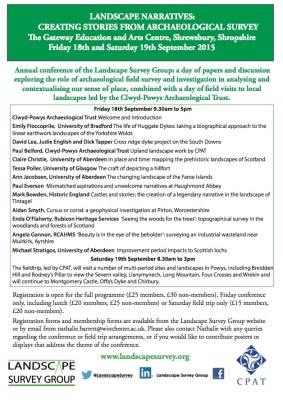Last Friday Chancellor George Osborne announced a plan to build 200,000 homes on brownfield sites by 2020. The process puts the responsibility on the local authority for pre-approving planning on these sites in order to remove obstacles to construction. The potential impact of archaeology on developments in this context could be substantial and could have a significant impact on the commercial archaeology sectors ability to cope with a huge upturn in urban archaeological excavations.

From the Guardian newspaper:
In the increasingly contested ground of housing policy, Osborne is proposing to order local councils to pre-approve planning permissions on 90% of suitable brownfield land by 2020. This will allow developers to start building sooner than otherwise, the Treasury argues. The government will set aside an initial £5m fund to help local authorities create the first 100 sites with so-called local development orders and this fund could grow to £500m. The government would also consult on a range of measures to enforce this approach, including allowing developers to apply directly to central government where councils have not done enough to remove planning obstacles on brownfield sites. Osborne said: “This urban planning revolution will mean that in effect development on these sites will be pre-approved – local authorities will be able to specify the type of housing, not whether there is housing. And it will mean planning permission for up to 200,000 new homes – while at the same time protecting our green spaces.”
Greenfield archaeology is a relatively straight forward process compared to the potentially deep, waterlogged, dangerous and complex nature of excavating in urban contexts. Towns offer a unique opportunity to observe continuity in occupation over long periods of time within surviving settlements. Within this context the structural, economic, social, political and religious development of populations can be mapped, analysed and compared with other similar populations like no other type of archaeological site. Unfortunately for developers the nature of these complex sites can cause significant costs and delays resulting from the significant logistical challenges that are presented when working in towns. Health and Safety is a particular concern when working in the centre of busy built up areas and in confined spaces, and is of vital importance both for the on-site staff and members of the public.
The Chancellor’s announcement does not have detail on how archaeology will be dealt with in this new accelerated planning process. Needless to say there is huge potential for direct impact of developments on urban and industrial archaeology both above and below ground. The cost of this could be substantial and will need to be borne by someone!
Our Solution
In a large number of cases a competent and experienced archaeologist will be able to investigate potential design solutions in consultation with the project engineer/architect in order to preserve archaeology in situ and avoid the cost of complex archaeological excavations and the associated analysis and reporting costs. There are a number of key stages that should be engaged in by developers:
- Early consultation – identify archaeological potential at the earliest stage possible
- Integration – get an experienced archaeologist into the design team at the outset
- Minimise impact – preserve archaeology where possible through a design solution
- Experience – where excavation is unavoidable only use experienced, well qualified staff in order to minimize risk
The Chancellor’s announcement suggests that there will be a significant increase in the archaeological works required on brownfield sites in the coming years. In order to make his proposals a success, developers will need to be more aware than ever of the challenges and opportunities presented by urban archaeology.

